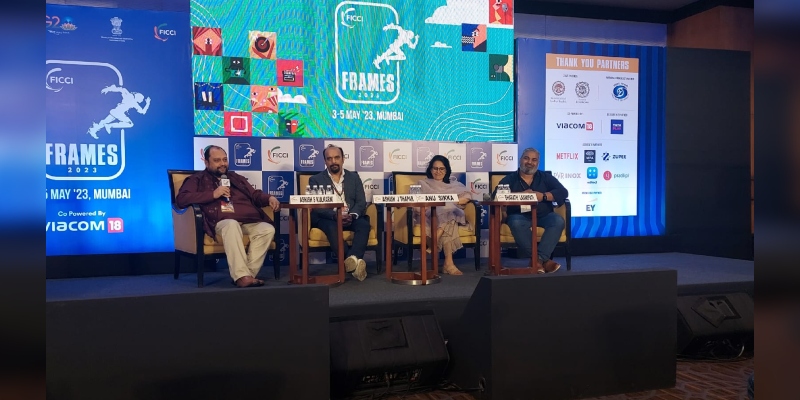
How is the Indian AVGC sector scripting success with indigenous homegrown stories that capture the hearts and minds of kids?
At FICCI Frames 2023, a panel comprising Viacom 18, Kids TV Network, creative, content & research head Anu Sikka, Green Gold Animation senior VP Bharath Laxmipati and Hi-Tech Animation CEO Ashish J Thapar discussed the story behind the success of Indian toon IPs, how the journey has been a fruitful one and what more is in store. The session was moderated by FICCI AVGC Forum chair & Punnaryug CEO Ashish Kulkarni.
Talking about the Indian studios’ transformation from overseas service work to homegrown IPs, Hi-Tech’s Thapar said that the transition was gradual. He said that initially, the service work was in bits and pieces and eventually, Indian studios realised the importance of creating their own IPs. “Studios like us are doing end-to-end shows now,” he stated. But with this complete value chain, where are we on doing co-productions with foreign studios where the concept is generated from India? “If we are able to marry the Indian aesthetic with what the west is looking at, we could get a great product,” said Green Gold’s Laxmipati. Taking the case study of Mighty Little Bheem, he stated that Netflix took it to around 190 countries and because it was a non-dialogue show, there was no need for translation. “We invest a lot of time in storytelling to make the theme universal,” he explained. Adding to the point, Nickelodeon’s Anu Sikka said that it is easier to have universal themes for pre-school shows compared to shows catering to other audiences.
Thapar believes that studios need empowerment. “I want to come up with an idea, there has to be acceptance,” he said. Studios understand the process of creating original shows, but they need the help of government, broadcasters and OTT platforms to understand where their shows can travel to. Laxmipati reflected on this opinion: “All Indian studios are bubbling with ideas. But most of these ideas sit on paper,” he said, “because studios are tied head-to-neck with work. Innovation is not happening right now.” Conceptualisation only happens when studios have development funds. A solution to this could be having more ideas that can be conceptualised, taking them to international markets and seeing whether the concepts can be turned to viable commercial projects, he suggested. “If we find an international partner, we could also have co-production with an Indian idea,” he said.
“Many people are sitting with great ideas but they don’t know how and where to pitch,” said Kulkarni. “Even if they know where to pitch, they are not able to reach the right people.” Sikka suggested the need to have a market like MIP and ATF in India, even though at a smaller scale, where people can pitch their ideas.
“In India, animation is equivalent to a medium only for kids,” Sikka pointed. “But if you look at the global market, animation is just another medium to tell stories.” So the next stage of growth for animation should be content for adults, she stated. For Laxmipati, taking Indian shows worldwide is the next step, and Thapar believes in having interactive content to stay updated with the new generation.